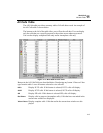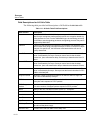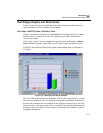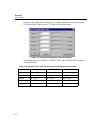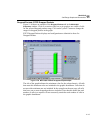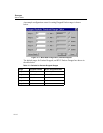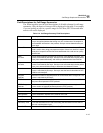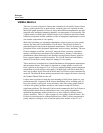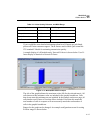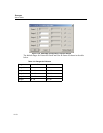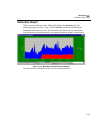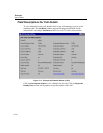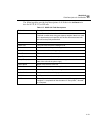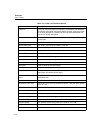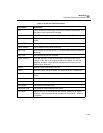
11-16
Surveyor
User’s Guide
VQMon Metrics
There are a variety of objective factors that contribute to call quality. Some of these
factors, such as packet loss or packet delay variation (jitter), are reported in other
Multi-QoS graph summaries. However, these individual measurements do not tell a
complete story and do not attempt to quantify user perceptions of voice quality. The
VQmon metrics in Multi-QoS, called R-factors, use a formula to take into account
both user perceptions and the cumulative effect of equipment impairments to arrive
at a numeric expression of voice quality.
Multi-QoS calculates two equipment impairment values to report as voice-quality
metrics: the Network R-factor and the User R-factor. The Network R-factor is
generated based on the physical equipment impairments. The User R-factor adds
perceptual effects to the equipment impairment, such as recency and delay. The user
R-factor attempts to add the “perceived” annoyance that a user may experience
during a call based on a perceptual effect called recency. Recency is an auditory
phenomenon where distracting events that have occurred more recently appear to
have a greater impact on perceived quality. The User R-factor has been found to
match well with users’ purely subjective ratings of voice quality.
These metrics are calculated by a formula that balances all equipment impairments
and perception factors. Each metric is reported as a single number on a per-call
basis, typically in the range of 15 to 94. Lower numbers indicate greater equipment
impairment or perceived poor voice quality. In Multi-QoS, calls are broken down
into a set of ranges for the Network R-factor and User R-factor values calculated for
each call. The actual R-factor numbers associated with a single call can be viewed in
the Channel Details Table for the call.
It takes some experience to map the exact meaning of the R-factor metrics to your
particular network. In general, the R-factors should map well to a sliding scale of
how voice quality is perceived. At the extremes, calls with values greater than 80
will have few quality problems and those with values less than 50 will have
significant problems. The Network R-factor can be compared to the User R-factor to
help determine which factors predominate in any voice quality degradation --
equipment impairments such as packet loss, or, more subjective factors such as
recency and delay. Table 11-5 shows ranges of voice quality for the R-factors. The
R-factor is also converted to a Mean Opinion Score (MOS), which corresponds to
purely subjective rating by users of speech quality on a numeric scale of 1 to 5.




